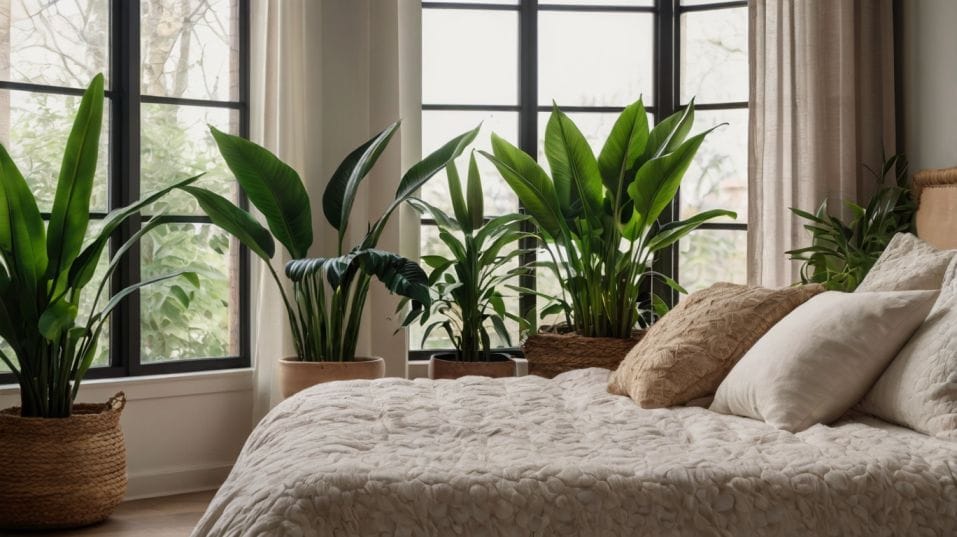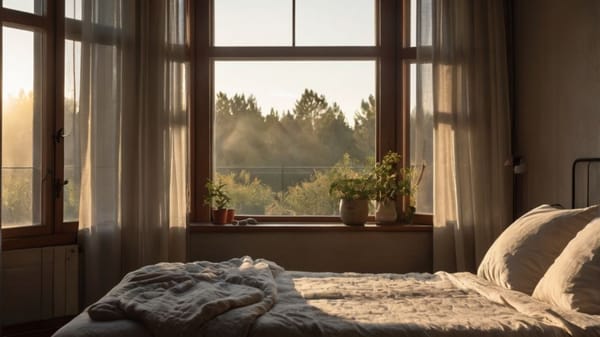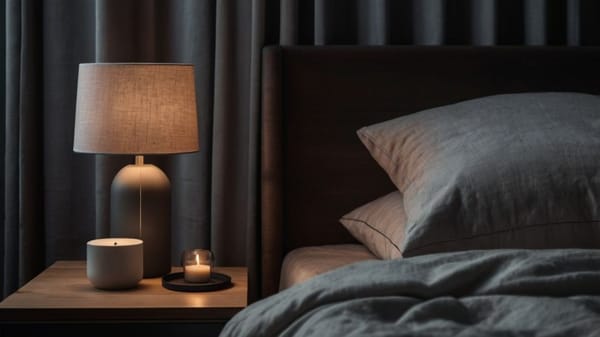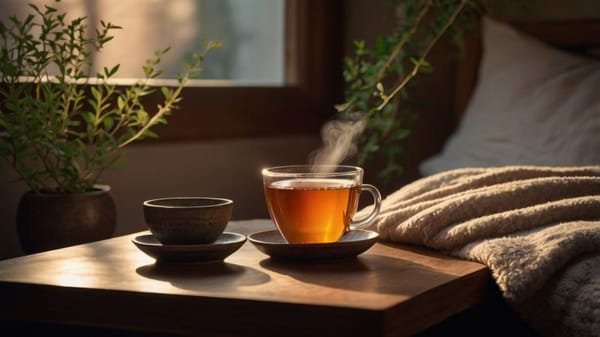The Best Plants to Keep in Your Bedroom for Air and Sleep
Boost sleep, energy, and recovery with easy-care bedroom plants that clean air, raise oxygen, and help your brain relax—night after night.

What if the secret to better sleep was already rooted in your bedroom? Before blackout curtains or fancy sleep trackers, clean, oxygen-rich air is what really sets the stage for deep rest.
But most bedrooms are filled with stale air and invisible irritants that quietly sabotage recovery. The fix is simple, natural, and surprisingly powerful—plants.
With the right ones, you can clean your air, calm your nervous system, and train your brain to wind down—without lifting a finger.
Why Your Sleep Quality Depends on Your Air
Let’s start with what’s actually going on while you sleep. Your body repairs itself, flushes out toxins, and resets your nervous system.
But none of that happens efficiently if your environment is working against you. Dry air can irritate sinuses. Indoor pollutants can trigger low-grade inflammation.
Low oxygen levels—especially in small or sealed rooms—can reduce the amount of deep, restorative sleep your brain cycles into.
Now here’s the good news: certain houseplants don’t just sit there looking nice. They actively filter toxins, boost humidity, and—this is key—release oxygen at night.
Add in natural scents that ease stress and lower heart rate, and you’re stacking the deck in your favor before your head even hits the pillow.
And no, this isn’t wellness fluff. NASA’s Clean Air Study (and follow-ups by environmental health researchers) showed that common houseplants absorb volatile organic compounds (VOCs) and increase air purity.
More recent studies in sleep science confirm that factors like indoor air quality, natural light exposure, and scent all play measurable roles in falling asleep faster and staying asleep longer.
So what you bring into your bedroom can literally change your sleep architecture. Let’s get into what belongs there.

Plants That Pull Their Weight While You Sleep
Not all plants are created equal when it comes to sleep optimization. The ones below go beyond visual appeal—they actively change the environment around you while you're off the clock.
Snake Plant (Sansevieria trifasciata)
This one should be in every beginner sleep-optimizer’s toolkit. It’s not just low maintenance—it’s biologically strategic. Snake plants release oxygen at night, a process called CAM (Crassulacean Acid Metabolism) that’s rare in plants.
That means more oxygen in your room while you’re asleep, not just during the day. It’s also a VOC filter, particularly effective against formaldehyde and xylene.
Place one by your bed or in a corner that gets some indirect light, and ignore it most of the time—it prefers dry soil.
Lavender (Lavandula angustifolia)
You’ve smelled it before in bath oils and aromatherapy sprays, but the real plant is where the real magic happens. Lavender’s scent interacts with the limbic system—the part of your brain that regulates emotion and sleep rhythms.
It’s been shown in clinical studies to reduce heart rate, lower cortisol, and improve sleep quality in people with mild insomnia. Just don’t overwater it.
Lavender prefers well-drained soil and plenty of sunlight, so it’s best suited for a window shelf that gets daytime exposure.
Peace Lily (Spathiphyllum)
A quiet multitasker. Peace lilies do two things exceptionally well: filter indoor air and increase room humidity.
Dry indoor air (especially from heaters or air conditioners) can mess with your respiratory system, leading to light sleep and frequent wake-ups.
This plant helps counter that by naturally adding moisture to the air, improving breathing and skin hydration overnight.
Bonus: it even reduces mold spores in the air, making it great for anyone with allergies. Keep it in low to medium light and water it once a week.
Aloe Vera
This one does double-duty. Like the snake plant, aloe releases oxygen at night, which helps maintain healthy air oxygen levels as you breathe through sleep cycles.
But aloe also has a visual cue that helps reinforce nightly habits. Its thick, sculptural leaves are a subtle reminder to slow down, reset, and take care of your body.
Keep it near a sunny spot and don’t fuss over it—it thrives with occasional watering and minimal attention.
Golden Pothos (Epipremnum aureum)
Also known as devil’s ivy, this plant is ideal if you want something dramatic but impossible to mess up. It’s fast-growing, thrives in low light, and scrubs toxins like benzene and carbon monoxide from your space.
The trailing vines also soften harsh angles in a bedroom, which has a surprising psychological effect—more natural curves and greenery means less mental clutter. Hang it in a corner or let it climb a shelf.
Areca Palm (Dypsis lutescens)
If your bedroom tends to feel dry or stale, an areca palm is a solid bet. It’s one of the best natural humidifiers you can get.
It adds moisture to the air as it breathes and helps maintain a more stable humidity level—ideal for deeper breathing and fewer disruptions during REM. It’s a bit larger than most houseplants, so it works best on the floor near a window.
How to Set Your Room Up for Sleep Gains
You don’t need a forest. Two to four plants—strategically placed—are more than enough to level up your sleep environment. Focus on these placement rules:
- Near your bed: Position oxygen-releasing plants like snake plant or aloe within breathing range for max benefit.
- Corners and walls: Use peace lilies or pothos to soften dead air zones and fill space naturally.
- Window areas: Sun-hungry plants like lavender or areca palm will thrive with natural light exposure.
And don’t overthink care routines. Most of these plants need watering once a week or less. Just keep them out of direct AC or heater airflow, and dust the leaves every couple of weeks to keep their air-purifying power strong.
If you really want to dial it in, pair your plants with a consistent wind-down routine. Lights dimmed an hour before bed, screens off, a little lavender in the air—and you’re training your brain to hit the brakes every night.
Final Thoughts: Sleep Smarter Starts With Simplicity
Sleep optimization doesn’t have to be complicated. The best systems are the ones that work quietly in the background. That’s what bedroom plants do.
They clean your air, raise oxygen, balance humidity, and even help cue your body to wind down. They’re low-effort, science-backed, and hard to screw up.
Start with just one plant—something low-maintenance like a snake plant or pothos—and let it be your signal to take sleep seriously. Set it up today. Let it work tonight. Then build from there.
Your best rest starts when your environment stops working against you. So make your space smarter. Greener. Calmer. Start now.




